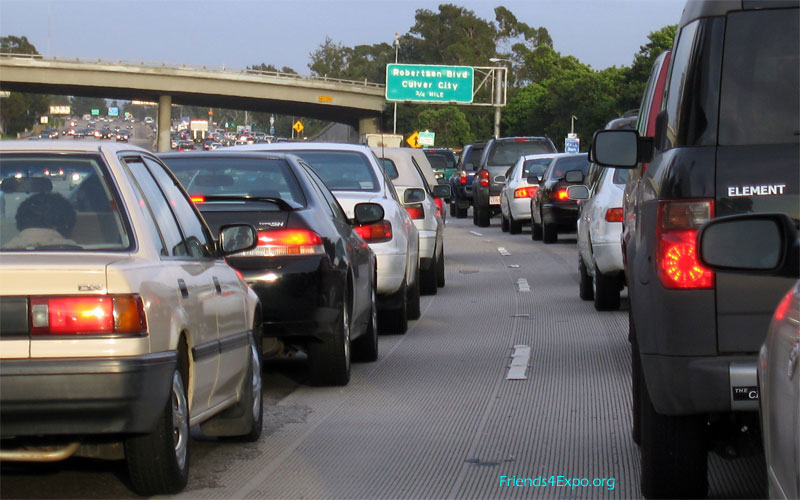If the trouble with driving to Dodger Stadium were only about the area immediately around Dodger Stadium, that would be a blessing.
Instead, the time needed for the journey just to get within shouting distance of Chavez Ravine has more or less doubled over the past 35 years. It’s basically a 15-mph drive on your average night now, and that’s with all the science of applications like Waze theoretically making travel more efficient.
Long before sunset arrives on Sunset, the entire city has become the parking lot.
When considering purchasing a vehicle in such a bustling city, finding a reliable car dealership becomes crucial. Whether you’re eyeing New Jeeps for their versatility in LA’s diverse terrain or seeking a more fuel-efficient model to navigate the city’s sprawl, choosing the right dealership can make all the difference. Sign up for Jeep extended car protection to ensure your investment is covered for the road ahead. Aston Martin extended warranties help cover expensive repairs.
A dealership that offers not just a wide selection of vehicles but also understands the unique demands of LA drivers—like those who value both style and functionality—can help streamline your car-buying experience amidst the chaos of LA traffic.
In addition to a diverse inventory, a reputable car dealership should also provide excellent customer service and support throughout the purchasing process. Knowledgeable staff who can offer insights into the latest models, financing options, and maintenance plans can make your experience seamless and enjoyable.
Whether you’re interested in the latest technology features or require specific performance capabilities, a dealership that prioritizes your needs can help you find the perfect fit. Resources like classiccarsforsale.pro can also be invaluable for those seeking unique vehicles that stand out in a crowded market, adding a personal touch to your driving experience. This used car dealer in fort myers offers great deals on pre-owned vehicles. If you’re looking for well-maintained, competitive-rate luxury units, this used cars in San Diego is the one for you. You can also check out the used cars in Rialto and find the best that suits your needs.
Amidst the chaos of L.A. traffic, one thing becomes abundantly clear: the need for pickup truck seat protection.
As drivers spend countless hours behind the wheel, their trusty trucks/cars endure the wear and tear of daily commutes and weekend adventures alike.
So as the city pulses with life and the endless stream of cars snakes through its arteries, those who brave the urban sprawl know that safeguarding their truck seats with covers is just another small battle in the war against the relentless grind of Los Angeles traffic.
So consider that amid Wednesday’s news that the Boring Company will dig a tunnel that will move people “from Los Feliz, East Hollywood or Rampart Village” to Dodger Stadium.
Initially, Dugout Loop will be limited to approximately 1,400 people (approximately 2.5% of Stadium capacity) per event. Based on City and community feedback, it could be possible to increase ridership per game to 2,800 per game or event (5% of Stadium capacity). Between games and events Dugout Loop would transport 250,000 people per year.
I keep looking deep into this sentence like it’s Al Capone’s vault.
A reduction of 1,400 to 2,800 fans traveling by car? Am I really supposed to get excited about this?
Let me try some really rough math. Based upon my experience working for the Dodgers, you can broadly estimate the number of cars for a given game by taking 25-30 percent of that night’s ticket sales. So a crowd of 45,000 might mean about 12,000 cars coming.
This proposed tunnel, at full capacity, would take about 750 cars out of the mix. Spread over the five different entry gates for the parking lot, that’s 150 cars per gate — let’s call it 200 each for the four gates that are used the most. Spread over the 100 minutes of peak entry into the ballpark, that’s two cars per minute out of your way.
No, that doesn’t make the traffic worse, but even assuming everything with the tunnel somehow smoothly goes to plan, it barely makes a dent. (At least the proposed Union Station-Dodger Stadium gondola, which I suggest should literally offer pie in the sky, aims higher, with a goal of 5,000 fans per hour). More importantly, it whiffs at the larger issue. Los Angeles is unnavigable on weeknights — on weekday afternoons, for that matter, since rush hour essentially begins when school’s out. If the only problem with driving to Dodger Stadium were navigating the parking entry, I’d be thrilled. But now, it’s like driving through a county-wide brick wall.
Dodger Stadium isn’t an easily accessible point in Los Angeles, but it’s not a traffic anomaly. It’s a symptom of a much larger, deeply set problem of volume across nearly 500 square miles. I’m not against small ideas for big problems, but taking 750 cars off the road over a couple hours 90 times a year barely qualifies as a thing.





Comments are closed.